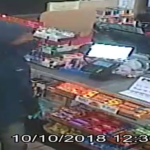VERO BEACH – In the topsy-turvy new world we live in, local bank loan officers say they are seeing a curious trend where borrowers are bringing cash to closing on refinance transactions to obtain more favorable terms on their home mortgages.
“I’ve got one sitting on my desk right now,” said Chris Pensch of CenterState Bank. “We are beginning to see more of it.” In the heady times a few years ago, cash-out refinancing was the rage with homeowners reworking their loans to get money for home improvements or maybe to buy that boat they had always wanted or to take a dream vacation.
Freddie Mac did a study and found in the middle of 2006 that around the country, 88 percent of refinanced mortgages were ones that increased homeowners’ mortgage balance by at least 5 percent.
However, when the bubble burst and homes were no longer cash cows to finance a bigger lifestyle, a subtle change began occurring. People wanted to take advantage of lower interest rates, and those who were able were bringing cash to the table to obtain more favorable terms.
Although a so-called cash-in refinance is not a unique concept, in the past they have been a tiny fraction of Freddie Mac’s portfolio – in the single digit range.
This past quarter, a Freddie Mac survey revealed that 33 percent of customers brought cash to the table to obtain a better interest rate.
That same study revealed a record-low 27 percent went the more traditional route of a cash-out refinancing.
Of course, taking advantage of cash-in refinancing requires the key ingredient – cash. Assuming you can cross that hurdle, there are some sound financial reasons why it might make sense to put that money back into your home.
Greta Pierpoint of Academy Mortgage says she is seeing clients who are simply after the best rates possible and will pay down what they owe to get to the $417,000 threshold of a conforming loan.
“Say you have a beachside client who owes $450,000 on his house and there is no issue with the loan to value ratio; I’ve had clients who come in and say they will pay down the loan just to get the absolute best rate,” she said.
“We are seeing more and more people (doing cash-in refinancing),” said Mary Cone, Vice President of Mortgage Banking at Marine Bank and Trust. “With interest rates so low and not earning much in CD’s, money market or savings accounts, they see buying down their mortgage as a way to save money.”
In the case of Pensch’s client, he wanted to knock down his mortgage from the 7 percent he was sitting at to current rates, which are fluctuating in the low 4 percent range.
The current low interest rates are particularly attractive to homeowners with adjustable rate mortgages that are about to reset well above what is available on the market today.
And the savings can mount up.
Take the hypothetical case of someone who bought a house for $100,000 at 7 percent interest and put down the traditional 20 percent to avoid paying mortgage insurance.
In 2010, the house is worth $75,000 and he owes $70,000 on the note.
To buy-down the note for the traditional 80-20 loan to value ratio you would have to spend $5,000 to reach the $65,000 threshold. However, his monthly mortgage payments at a 4.25 percent interest rate would drop from $532 a month to $320.
This example is oversimplified in many ways by assuming no points, the best possible credit, a good-paying job and the available cash, so homeowners are encouraged to speak with a mortgage specialist for specific circumstances.
“Every client is different and each situation is different and you have to run the numbers and see if it makes sense to them,” said Jim Stanley, Bank of America Vice President and Mortgage Loan Officer, who added two of his last 10 refinances involved the home owner putting more money down.
Aside from having the available cash, the biggest roadblock is the declining values of homes, which throws the loan-to-value balance out of whack and makes refinancing impossible.
However, the Obama Administration through its Making Homes Affordable act has loosened some of the guidelines that could bring a refinancing that once seem impossible within reach.
Homeowners who still owe $105,000 on a mortgage for a house worth $100,000 and meet all the criteria could still qualify for a refinancing at the current rates without paying mortgage insurance.
The MHA plan has a threshold of as high as 125 percent loan-to-value ratio, but the interest rates drop as you get that ratio lower and if you can get the loan below 95 percent of the value of the property, you get close to paying the market rates.
As CenterState Bank’s Pensch points out, these loan packages are providing stability by allowing people who have the means to stay in their homes.






